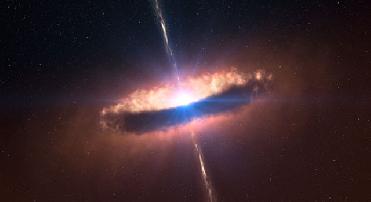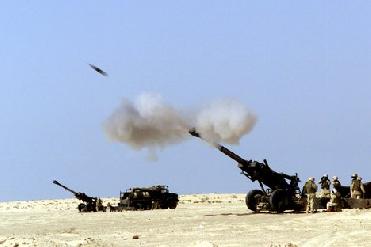
Astronomers have obtained the first clear look at a dusty disk closely encircling a massive baby star, providing direct evidence that massive stars do form in the same way as their smaller brethren -- and closing an enduring debate. This artist's concept shows what such a massive disk might look like. ESO/L. Cal�ada photo
PASADENA, CALIFORNIA (BNS): Massive stars in the galaxy are formed by the same process as smaller ones, according to a new discovery.
Astronomers have long been unclear about how the most massive stars form because they tend to be at very large distances and surrounded by dusty envelopes, said Stefan Kraus, a NASA Sagan Exoplanet Fellow and astronomer at the University of Michigan, Ann Arbor.
Using the Very large telescope Interferometer of the European Southern Observatory in Chile, Kraus and his team focussed on IRAS 13481-6124, a star located at a distance of 10,000 light-years away in the constellation Centaurus, and about 20 times more massive than the sun.
They discovered a massive disk of dust and gas encircling the giant young star. "It's the first time something like this has been observed," Kraus said.
"The disk very much resembles what we see around young stars that are much smaller, except everything is scaled up and more massive."
The presence of the disk is strong evidence that even the very largest stars in the galaxy form by the same process as smaller ones -- growing out of the dense accumulation of vast quantities of gas and dust, rather than the merging of smaller stars, as had been previously suggested by some scientists.
The results were confirmed by NASA's Spitzer Space Telescope. "We looked at archival images of the star taken by Spitzer, and confirmed that the star is flinging disk material outward from its polar regions, just as we see with smaller stars and their dust disks," Kraus said.
The discovery also opens up the possibility that planets, perhaps even Earth-like ones, may be able to form around massive stars like IRAS 13481-6124, in the same way that they formed around our sun when it was much younger, NASA said.
 Previous Article
Previous Article Next Article
Next Article













The Indian Air Force, in its flight trials evaluation report submitted before the Defence Ministry l..
view articleAn insight into the Medium Multi-Role Combat Aircraft competition...
view articleSky enthusiasts can now spot the International Space Station (ISS) commanded by Indian-American astr..
view article